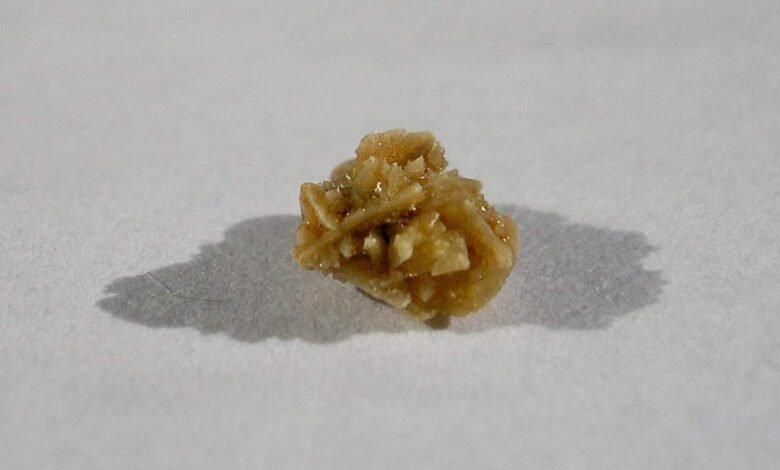Kidney stones

Kidney Stone Information
According to a children’s tale, a single pea placed under 20 mattresses and 20 mattresses was enough to keep the real princess awake all night.
In real life, a stone smaller than a pea lodged in one or the other of your kidneys is enough to keep you up all night, but it can made you go mad with pain and grit your teeth until you went to a urologist to get relief from the inhumane pain.
Kidney stones formations composed of mineral or organic substances that form in the kidneys.
Approximately 10% of people develop kidney stones at some point in their lives. You are most likely to suffer from this type of health problem if you are a male between the ages of 20 and 40 or have gout.
Men are 4 times more likely than women to suffer from this disease. Doctors say this is due to female hormones that prevent stones from forming in women.
Among the main factors for the development of the disease is hereditary predisposition, so people whose relative had or has kidney stones should be especially careful.
Most people who initially get the disease are usually between 30 and 40 years old and are in very good health.
Similar to gallstones, which in most cases remain undiagnosed and these formations do not always cause problems.
This type of problems can exist for many years, without the patient suspecting them, since they develop without symptoms, and it is also possible that they do not develop and do not change in size.
However, when they grow large enough to block the flow of urine through the ureter (one of the two tubes that allow urine to drain from the kidneys to the bladder), the pain can be excruciating.
Symptoms of this disease are severe and sharp pain in the area of the affected kidney, frequent and painful urination, blood in the urine, nausea, high fever, chills and severe exhaustion.
Diet can be a major factor in why some people develop kidney stones. You can make some lifestyle changes to help prevent kidney stones from forming.
Kidney stone types
Kidney stone types are different and each has its own specific causes and methods of treatment. The most common are calcium oxalate stones.
They are formed from calcium crystals that combine with oxalate, a substance found in many foods, including vegetables, fruits and some types of nuts and seeds.
Consumption of large amounts of these foods, especially with insufficient fluid intake, can increase the risk of these stones forming.
Urate stones are another type that are usually associated with gout or chemotherapy. They are formed from urate, a type of salt that is formed during the breakdown of purines – chemicals found in meat and fish.
People who consume large amounts of meat and fish may be at greater risk of developing urate stones.
Struvite stones are formed as a result of urinary infections. These stones can grow quickly and become quite large. Women are more likely to develop this type of stone as they are more prone to urinary tract infections.
Cystine stones are rare and result from a genetic disorder called cystinuria.
In this disease, the kidneys cannot perform their normal function of removing the amino acid cystine from the body, leading to the formation of stones.
Understanding the different types of kidney stones and their causes can help people take appropriate prevention and treatment measures.
Treatment of kidney stones
If you have ever suffered from this disease and experienced kidney crises in the past, or think you are predisposed to developing kidney stones, it is best to take measures now to to protect yourself from this disease.
Drink plenty of fluids. Increasing your fluid intake is probably the only change you need to make to forget about kidney stones altogether.
The minimum required daily amount is between 6 and 8 glasses, as this is the absolute minimum, below which you should in no case go, as if you want to have healthy kidneys and protect yourself from problems with them, it is good to follow fluid intake.
During the summer months, this amount should be increased to 10 – 12 glasses of water per day, and it is recommended to drink clean water.
Liquids can also be natural juices and non-alcoholic still drinks. However, caffeinated drinks are not recommended if there is a risk of developing oxalate kidney stones.
Eat less meat and fish if you are prone to the formation of urate stones in the kidneys, as they are formed from food with a high protein content, and for this you should not undergo a high protein diet.
Reduce your intake of Vitamin C, because amounts above 3000 mg intake per day of this vitamin will put you at risk of forming kidney stones and requiring their treatment.
The recommended daily dose of this vitamin is 90 mg for men and 75 mg for women.
Regular exercise makes it easier for calcium to move from the blood to the bones, so you have stronger bones and a lower risk of kidney stones.
Tips and Recommendations
Kidney stones can cause significant discomfort and pain, but with the right prevention and treatment strategies, they can be successfully managed.
It is important to maintain a healthy lifestyle, including drinking enough water, limiting oxalate-rich foods, and maintaining a healthy body weight.
At the first signs of kidney stones, such as pain in the side of the abdomen or blood in the urine, it is important to seek medical attention.
Doctors may suggest a variety of treatment methods, including medication, shock wave lithotripsy, or even surgery in some cases.



